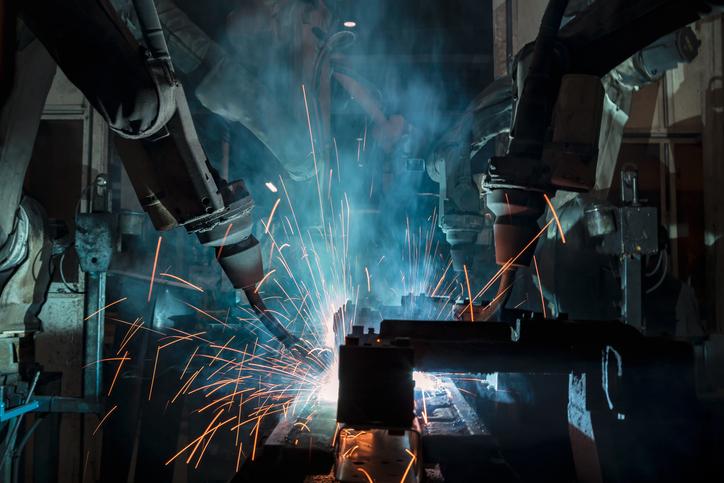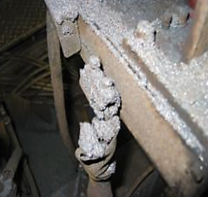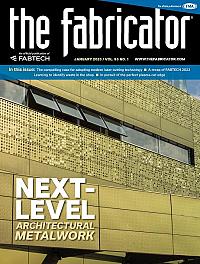Sensor-based Error Proofing Specialist
- FMA
- The Fabricator
- FABTECH
- Canadian Metalworking
Categories
- Additive Manufacturing
- Aluminum Welding
- Arc Welding
- Assembly and Joining
- Automation and Robotics
- Bending and Forming
- Consumables
- Cutting and Weld Prep
- Electric Vehicles
- En Español
- Finishing
- Hydroforming
- Laser Cutting
- Laser Welding
- Machining
- Manufacturing Software
- Materials Handling
- Metals/Materials
- Oxyfuel Cutting
- Plasma Cutting
- Power Tools
- Punching and Other Holemaking
- Roll Forming
- Safety
- Sawing
- Shearing
- Shop Management
- Testing and Measuring
- Tube and Pipe Fabrication
- Tube and Pipe Production
- Waterjet Cutting
Industry Directory
Webcasts
Podcasts
FAB 40
Advertise
Subscribe
Account Login
Search
Inductive proximity sensors help upgrade a fab shop's weld cell
Inductive proximity sensors don’t have to be disposable for metal manufacturers
- By Dave Bird
- Updated May 9, 2023
- November 25, 2022
- Article
- Automation and Robotics

Sensor systems in automated welding cells can take a beating. To avoid excessive downtime, metal fabricating companies should invest in sensor technology that can stand up to the rigors of a welding cell. Thossaphol/iStock/Getty Images Plus
Noncontact inductive proximity sensors are an essential part of automated welding cells in such applications as automotive, furniture, aerospace, and appliance production. In such a sensor, an electromagnetic field emitted by a coil in the front end of the device is eventually dampened by a metal target, triggering an output to indicate clamping position, part presence (nesting), and feature validation. And when one of these sensors fails—often a preventable problem—the results can be disastrous.
The general opinion among manufacturers is that sensors used in automated welding applications require intensive maintenance and high rates of replacement by already busy maintenance people. So high MRO costs are simply part of the program.
Quality and purchasing managers often figure that excessive sensor consumption is a given, so they hunt for the lowest possible prices on sensors that will get them close to a 90-second changeout time. The vendor with the lowest price and best delivery time wins.
Some opt for an industrial MRO vending machine or cabinet along with a high volume of consignment stock to ensure material is available for rapid changeout. If a sensor used in a critical cell location fails and a replacement isn’t in stock, the whole operation could shut down, or at least high volumes of rework and sorting could result.
But low-cost sensors and fast MRO are not the answer to high failure rates and low productivity in critical welding operations. How did these kinds of scenarios evolve to this critical point, when the sensor system is one of the most important yet most vulnerable in an aggressive weld environment?
It begins with weld cell design and specifications from the customer buying the machine. A preferred brand of sensor might be specified in the bill of material, but unless a great deal of thought goes into the type of metal being joined, the weight of components, parts loading issues, type of welding, the kind of heat or expulsion that will occur, and how close the sensors will be to the weld, many pitfalls can result—and often do.
Weld cell manufacturers often have a basic “house standard” for sensors, mounting hardware, and connectivity that’s not necessarily specific to the application but extremely inexpensive to integrate as an OEM. And that can spell trouble. A lightweight sensor system might get you through the production part approval process or runoff, but exposed sensor systems that aren’t designed to withstand the rigors of welding applications over time are destined for premature failure (see Figure 1).
First Steps Toward Optimizing Your Welding Sensors
So, how can a critical welding operation get off the high-maintenance/high-replacement merry-go-round, reduce unplanned machine downtime, and decrease sensor inventory?
- Re-examine how your welding sensors are being used and resolve to get a handle on the reoccurring, problematic core issues. The more effort you commit to upgrading outdated weld cell sensor systems, the faster your return on investment.
- Analyze the root cause of failure first before attacking supply-chain management issues. Rapid dispensing through vending machines will not fix the situation, and constantly replacing sensors does not address sensor consumption itself.
Audit for Objectivity
Unless procedures are documented, subjectivity always prevails. Documentation of what’s going on with your sensor-related welding program adds objectivity and makes all levels of management aware of the locations prone to sensor failure. This forces the organization to analyze the root causes of premature failure and to prioritize problems, especially when metrics are applied.
Experienced consultants can help you audit each hot spot in each welding cell and generate a report that will serve as a road map for beginning an upgrade of your sensor system, including application-specific sensors, appropriate mounts, and highly robust cable.

FIGURE 1. Exposed sensor systems that aren’t designed to withstand the rigors of welding applications over time are destined for premature failure.
Welding Sensor Mounting Options
Sensors are supposed to be noncontact devices, so the mechanical mounting system is as important as the sensor itself. Pay close attention to guarding each sensor in your weld cell to best-practice standards.
Heavy protective mounts that encapsulate and solidly anchor the sensor body allow for rapid changeout and act as a heatsink to dissipate heat from vital sensor electronics. The best mounts lock a sensor in without vibrating out of position and resist damage from any outside forces, including being coated against spatter accumulation.
The sensor mount shown in Figure 2 allows for precision gapping between the sensor face and the metal target. The steel construction withstands abuse, and the coating prevents slag buildup.
Welding Sensor Cable Protection
Protecting a sensor in a tough weld environment includes covering the cables and connectors with jacketing material. Weld cell hostilities are brutal on these devices, especially in high-heat and expulsion-laden weld environments, and more often when motion is involved.
General-purpose sensor cable jacket materials like PVC, PUR, and TPE installed by machine builders are not matched for welding applications, and the results are predictable: maintenance work, machine downtime, and unnecessary and excessive replacement part costs (see Figure 3).
Polytetrafluoroethylene (PTFE) is one option for overjacket material that resists high heat and spatter. PTFE split tubing provides circumferential protection and closes in on itself as a cable is installed (see Figure 4). This durable, flexible material withstands harsh welding cell environments and debris to protect sensor cables, hoses, and pneumatic tubing.
Upgrade ROI
Even if you have multiple welding cells that are consuming a high number of sensors, upgrades can be surprisingly simple with readily available, durable sensor system options. Sensors made specifically for weld cell immunity are available in tubular and rectangular styles with even the attachment nuts coated for protection (see Figure 5).
Your sensor manufacturer can help you determine exactly what sensor type, mounting, and connector overjacketing to integrate into your cells. With upgraded equipment and operators properly trained in preventive maintenance, you’ll be on your way to increased productivity and an immediate and substantial return on investment.
About the Author
Dave Bird
Metals Fabrication Process Improvement
1061 Colina Drive
Villa Hills, KY 41017
513-207-5681
subscribe now

The Fabricator is North America's leading magazine for the metal forming and fabricating industry. The magazine delivers the news, technical articles, and case histories that enable fabricators to do their jobs more efficiently. The Fabricator has served the industry since 1970.
start your free subscription- Stay connected from anywhere

Easily access valuable industry resources now with full access to the digital edition of The Fabricator.

Easily access valuable industry resources now with full access to the digital edition of The Welder.

Easily access valuable industry resources now with full access to the digital edition of The Tube and Pipe Journal.
- Podcasting
- Podcast:
- The Fabricator Podcast
- Published:
- 04/16/2024
- Running Time:
- 63:29
In this episode of The Fabricator Podcast, Caleb Chamberlain, co-founder and CEO of OSH Cut, discusses his company’s...
- Trending Articles
AI, machine learning, and the future of metal fabrication

Employee ownership: The best way to ensure engagement

Dynamic Metal blossoms with each passing year

Steel industry reacts to Nucor’s new weekly published HRC price

Metal fabrication management: A guide for new supervisors

- Industry Events
16th Annual Safety Conference
- April 30 - May 1, 2024
- Elgin,
Pipe and Tube Conference
- May 21 - 22, 2024
- Omaha, NE
World-Class Roll Forming Workshop
- June 5 - 6, 2024
- Louisville, KY
Advanced Laser Application Workshop
- June 25 - 27, 2024
- Novi, MI



























